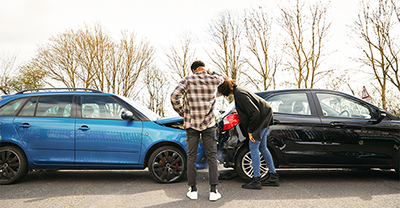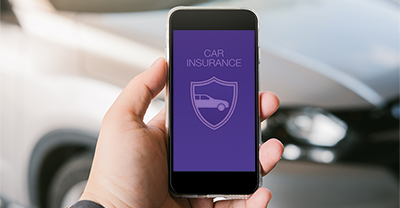How to file an auto insurance claim


0 min. read
What is an auto insurance claim?
Car insurance claims are requests drivers make to an auto insurance company for monetary assistance after an accident or other incident causes damage or injuries. Explore Dairyland’s cheap car insurance options to find the coverage that fits your lifestyle and budget.
What are the steps in filing a car insurance claim?
If you’re involved in an auto accident, take these immediate steps before contacting your insurance company:
Stay at the accident scene.
Get to a safe area off the roadway. If your vehicle is drivable, move it out of traffic.
Get help for anyone who is injured.
Call the police.
Collect the following information:
Names, phone numbers, insurance companies, and policy numbers of any other drivers involved.
Photos of all involved vehicles and/or property.
Once you've assessed your damages and decided you’re going to file a claim, it's best to file as soon as possible following the accident. Take the following key steps:
1) Contact your car insurance company
Contact your insurance agent and ask them what information they’ll need for your claim. Along with the information you collected in step #5 above, you’ll likely be asked to provide the following:
Accident location, date, and time
Weather conditions at the time of the accident
Police and/or accident reports
Whether you received medical attention on-site or afterward
If you’re a Dairyland® customer, log in to your account to submit your claim online. If not, click "Report as guest" or call us at 800-334-0090 and a claims representative will assist you.
Use the links below to check the status of a claim or payment. Current customers can log in to access more detailed claim information. To reimburse an active claim, you can make a payment.
2) Review your car insurance policy
Your claims representative will have access to this information, but the more familiar you are with your coverages, limits, and deductibles, the better. You’ll have a good idea of which coverages will likely apply, given the accident circumstances. This can also help you start planning for any out-of-pocket costs—both for applicable deductibles and if damages seem likely exceed your coverage limits.
3) Communicate with the claim adjuster
Once you've filed all the necessary paperwork, your insurance provider may send an adjuster to investigate and review your damages. When the adjuster corroborates your account and approves your claim, your insurance company will normally send you a check to help cover your insured losses.
The more accessible you are when they contact you—for follow-up questions, repair estimates, and other relevant topics—the more efficient the process will be.
4) Have your vehicle repaired
Assuming your vehicle isn’t determined to be a total loss, you can work with your insurance provider and an approved repair shop. Your claim adjuster will perform or facilitate a vehicle repair estimate. Depending on your insurer and other factors, they will issue a check for the repairs—minus your deductible—either to you or directly to the shop.

Get a free car insurance quote and see how we can help protect you.
The general information in this blog is for informational or entertainment purposes only. View our blog disclaimer.
*Data accuracy is subject to this article's publication date.










